#;ashigaru
Text

Sundew clothing, based off Ashigaru, Japanese light infantry! The helmet is called a jingasa, and the straw raincoat a mino. I headcanon that the poisonwings lop off their horns when drafted into the military, to make it easier to fit helmets onto their heads, to use the horns for composite bows, and for a symbolic reason as well. I also like the idea of Pantalan dragons using primitive fire arms, though not quite effective enough to completely phase out melee weapons and bows.
#dragon#wof#wings of fire#art#dragons#fantasy#wof fanart#fanart#wingsoffire#armor#Mino#jingasa#Clothing design#dragon armor#Ashigaru
548 notes
·
View notes
Text

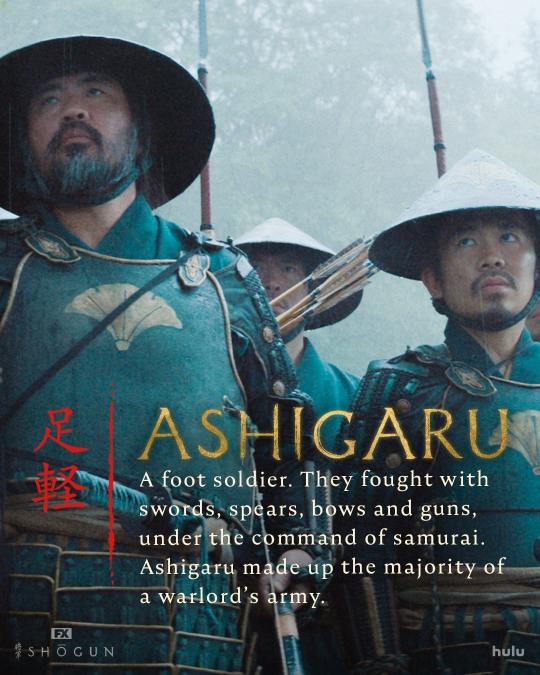
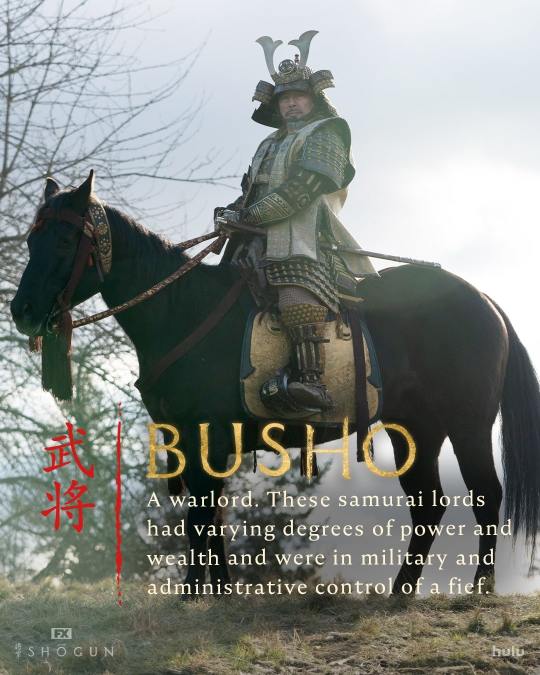
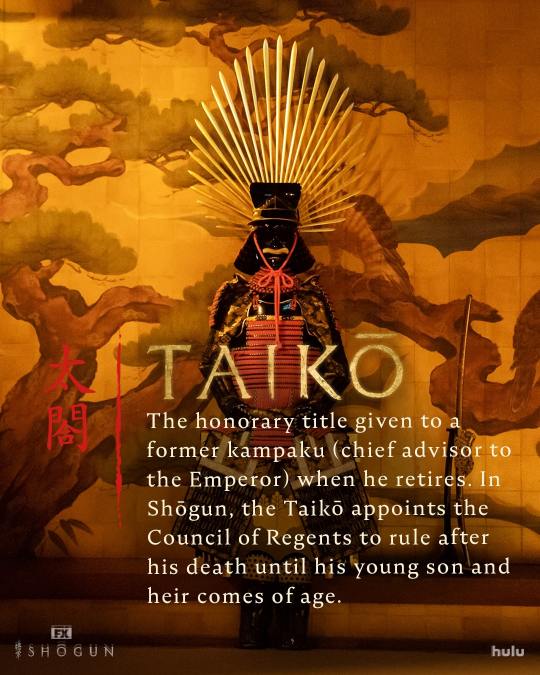

The ranks and titles in Feudal Japan by FX's Shogun
77 notes
·
View notes
Text
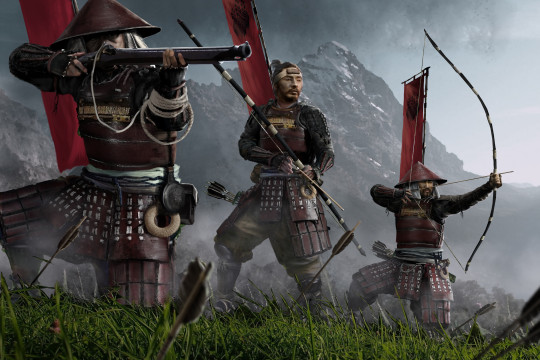
FireForge Games - Ashigaru Shooters by Omar Samy
17 notes
·
View notes
Text
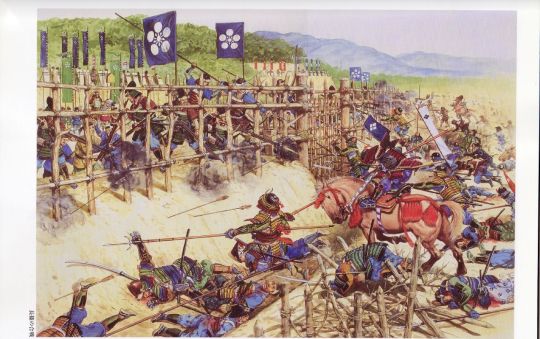






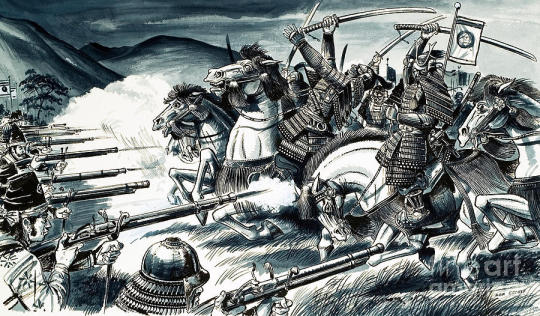


Ten Depictions of the Battle of Nagashino (1575)
Artists are identified in captions
#sengoku period#warring states#japanese history#samurai#oda nobunaga#tokugawa ieyasu#honda tadakatsu#takeda katsuyori#ashigaru#tanegashima#matchlock muskets#historical reconstruction#historical art#1500s#16th century#ritta nakanishi#angus mcbride#johnny shumate#osprey#richard hook#james field#brian palmer#howard gerrard#dan escott#giuseppe rava#gerry embleton#firearms#cavalry
16 notes
·
View notes
Text
Shōgun Historical Shallow-Dive: Part 1
Does everybody else's heart hurt? Good! Let's get learning. These characters and the people that inspired them all deserve their own post, but here's a quick one if you're wondering what happened. This is a shallow-dive because the history is extremely complicated, and a condensed version of just the events leading up to Sekigahara (the battle depicted in the finale) take up entire volumes of history. I'll do my best to answer questions about what happened to our three protagonists, in the show, as well as real life 🙇
One note: given I'm not a professional historian, I've got no obligation to not have biases and favourites. I've tried to keep most of them out of this, but if you want to punish yourself by trying to keep track of who's who in the Azuchi-Momoyama period, this book is the best English-language overview.
What happened to Toranaga (Tokugawa Ieyasu)?
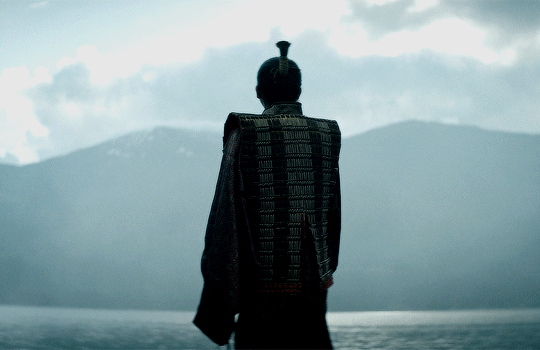
Gif: @yocalio
I am not as strong as I might be, but I have long known and practiced patience. And if my descendants wish to be as I am, they must study patience. - from The Legacy of Ieyasu Tokugawa
In the book, Toranaga reveals that it had been his aspiration to be Shōgun from the very beginning. That was what drove his alliance with the Taiko, that was what drove his feigned alliance with the Heir.
History follows a very similar path. I re-read some chapters on the battle of Sekigahara last night, and there is no easy way to explain it, but: the result of Sekigahara (an enormous, two-day battle with 200,000 samurai and ashigaru warriors in the field) was an enormous victory for Tokugawa, Toranaga's real-life counterpart.
Years - sometimes decades - of scheming by Tokugawa had made Ishido/Ishida's Western Alliance completely fragmented. In the months leading up to the period displayed in the show, Toranaga was calling in a lifetime of marriage alliances, diplomatic advantage, defensive pacts and childhood friends who'd risen to high status. Re-reading the sources, the names of all the lords of all the important fiefs and castles makes my head spin, let alone the ones that turned out to be pivotal to Toranga/Tokugawa's victory. But it was a resounding victory, and by both the numbers and the disposition of forces, he should have lost.
Historians have a consensus that if the 'Western forces' of the Heir had have fought together with a unified command structure, they would have won, easily. But they didn't - orders from Ishido/Ishida were ignored, Toranaga/Tokugawa endured onslaughts, and the Regents' opposing armies eventually fractured and melted away. This was a last-of-an-era battle. Families were fighting on either side, every single unit that could be brought to bear was on the field. It is no exaggeration to say Sekigahara is one of the few, unambiguous battles upon which the beginning of a historical era came down to.
Toranaga/Tokugawa triumphed because he spent decades building unity of purpose and strong alliances, simultaneously sowing division amongst the Regents, who ultimately balked at being commanded by a bureaucrat like Ishido/Ishida. Whilst there was no one decisive moment of an extremely bloody, rainy, two-day battle, the fact that Ishido/Ishida's forces refused to be told what to do by someone of lower status was the main theme of their defeat. A crucial army stationed on the hill stayed still, refusing to commit to either side, until Toranaga/Tokugawa fired muskets into their ranks. They made up their mind, and attacked Ishido/Ishida's Western army. Ishido/Ishida's one trick of firing a flare to commit the reserve army didn't work. The commander ignored it. Instead of being there to fight for something, Ishido/Ishida's coalition was there to oppose someone. They all had different reasons. And ultimately, the man that brought them together didn't command enough respect to command a battle.
As our show Toranaga said, the Regents fell upon each other. He might have been a bit optimistic about how and why this would happen (they fell over each other in retreat, and it took two days of horrific combat), but it happened. Tokugawa Ieyasu was famous for richly rewarding former enemies, and most of those he defeated kept their heads. This reputation is a strong incentive for leaving the field when things start going Tokugawa's way.
The two exceptions were Ishido/Ishida, and Kiyama/Konishi, both beheaded in Osaka (Ishido, bizarrely, was upbeat about his fate, until seconds before the sword came down). Killing Ishida was the obvious move, as the man schemed and bitched so much he caused a civil war. Killing Konishi was more calculated - it opened up his trade-hub in Kyushu to being ruled by a fervent Buddhist daimyo and ally of Tokugawa.
Toranaga/Tokugawa forces soon captured Osaka Castle after the battle of Sekigahara, and with it, the Heir.
Toranaga/Tokugawa 'reluctantly' accepted the Imperial appointment of Shōgun three years later, in 1603. In 1605, he abidcated, passing the title to his most malleable and competent son, Hidetada. He was the real power behind the throne and ruled until his death in 1616.
The year before he died, he was able to fully secure his legacy. The Heir (in real life, Toyotomi Hideyori) had begun to gather daimyo to Osaka castle who were opposed to Tokugawa. Tokugawa used the flimsiest of pretexts - the opening of a shrine - to order the Heir out of the castle. He refused, Tokugawa forces besieged the castle - twice. The first one was called off because cannon fire nearly killed Ochiba no kata, and she pushed her son to sue for peace. By the second siege, there would be no peace: the Tokugawa forces defeated all oppoosition, and secured the legacy.
Toranaga/Tokugawa's descendants would rule for 250 years of internal peace and external lock-down of the country from barbarians (and Christians), except for limited trade.
The big question: did Toranaga/Tokugawa really want to be Shōgun from the start? History tells us, rather unambiguously, yes - before the campaign, he was writing his 100 Articles for ruling Japan, which would be instrumental for his family holding on to power and preventing internal strife. His plan may well have gone back to his formative, teenage years. At the very least, it is highly likely it was solidified when Toranaga/Tokugawa was a vassal of the Dictator Koroda/Oda Nobunaga - the man Mariko/Hosokawa Gracia's father assassinated, who was brutal even by the standards of the day. We don't have time for him, the Taiko, and Mariko's father today - but my opinion is that the motherfucker firmly deserved to be assassinated, and the only amazing thing is that the inspiration for Mariko's father was able to hold off for so long.
But that killing set off a chain of events that would lead to Toranaga/Tokugawa becoming sole ruler of a unified Japan. So much of history is contingent on individual actors and random events. It didn't have to happen. It was extremely unlikely. But, through patience (and by my reckoning, a lot of luck), he made the world he wanted to see. Whether that was worth the price in lives is for the reader to decide.
But by all accounts, Toranaga/Tokugawa died very satisfied in the knowledge that his legacy was secure, his realm was unified, and, finally, at peace.
What happened to Mariko (Hosokowa Gracia)?
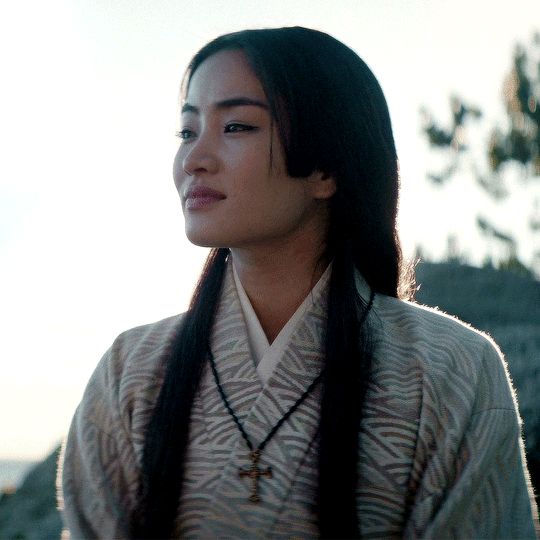
Gif: @yocalio
As is probably obvious, Mariko's purpose was fulfilled before the conclusion of the show. As is also probably obvious, her historical counterpart - Hosokowa Gracia - did not have an affair with an English sea pilot (😢). She did, however, change Japanese history, and tipped the balance of noble support towards Toranaga/Tokugawa. Her death had meaning.
The framing of her marriage to Buntaro and exile after her father's successful assassination of a brutal dictator is almost exactly correct. She was one of the most desirable, valued and accomplished young noblewomen of the day. The stain of the name Akechi would haunt her for the rest of her life. Real life Buntaro, Hosokowa Tadaoki, genuinely sent her away for two years to save her life. The Hosokowa family even went so far as to pretend that she had died, to save her from the Taiko's vengeance. Whilst her marriage was an unhappy one (though not, as far as is known, abusive), she was beloved by the head of the Hosokowa clan, the show's Hiromatsu. They went to extraordinary lengths to keep her safe.
Her main comfort in her life was her faith. It's perhaps here that we get the strongest through-line from Hosokowa Gracia to Mariko - unafraid, intelligent, and fierce.
She first came to learn about Christianity from her Christian maid, who extolled the virtue of the faith, and the opportunities for intellectual stimulation theological discussion could bring. In 1587 (five years after her father assassinated the dictator, three years after she returned from exile), she decided to take action on it. She snuck out of Osaka Castle and visited the main church in Osaka - she had lively conversations with the elderly Father-Visitor, and was an excellent pupil of both Portuguese and Latin theological texts. I don't know if you guys have ever tried to read those things, but even in translation, they are torturous. This woman was extremely intelligent.
As a noble woman of the Taiko's court, she knew he was about to issue an edict outlawing Christianity. Being the (excuse the language) absolute fucking badass that she was, she had her maid (baptismal name Maria) baptise her before the edict was issued, transforming from Hosokowa Tama to Hosokowa Gracia. Even though she had to keep her faith a secret due to the Taiko's edict, she found a way to hold on to it. She had a special sake cup made with the Hosokowa mon emblazed on the lip, which, on very close inspection, was actually a Christian cross.
During this time of her religious conversion and education, a primary source from a Jesuit priest says that 'I have never disputed with a woman of such clear judgement, and such definite knowledge.' She was known for being fiercely intelligent, and this is commented on in many European letters and journals that have remained from the Catholic church's time in Japan.
Her relationship with her husband - like Buntaro, a senior retainer of Toranaga/Tokugawa - was frosty. They never reconciled after her father's (Akechi Mitsuhide) rebellion, but her husband did recall her from exile when it was safe to do so, and she lived to serve a very similar purpose to Mariko in the book and show. By virtue of not being an interpreter, she was less close to Toranaga/Tokugawa than in the book and show, but she was still dedicated to her clan and her clan's overlord, as will become clear.
Just as in the show, Hosokowa Gracia agonized at the thought of seppuku putting her soul in mortal danger. But she perceived her duty to be to ensure death before being captured or otherwise dishonoured.
To put it bluntly, Ishido (Ishida in real life) fucked up. Before any military manouvers had begun, he went to seize hostages of friends and enemies alike throughout Osaka castle. His forces tried to forcibly seize Hosokowa Gracia from the family quarters. She gave orders for her senior retainer to kill her, her daughter, and set fire to their section of Osaka Castle, so that none could be taken and subjected to dishonour. She arranged with this samurai to stand on one side of a shoji screen, facing him. He stabbed her through the heart with a naginata. She died, satisfied in the knowledge that:
...the death was not suicide, and her soul would doubtless be spared from the torments of Hell.
Although not doing this directly on the orders of Toranaga/Tokugawa, it's highly likely she knew that she was making a statement (many of the other hostages went quietly). This furthered his cause immensely. Inspired by Hosokowa Gracia, families streamed out of Osaka Castle and other Regent-held castles by any method they could. Her example ignited a firestorm of controversy surrounding the gall of a jumped-up bureaucrat (a reputation Ishido/Ishida would never escape) forcing the death of one of the era's pre-eminent noblewomen. Although her husband was relatively unbothered by her death, her father-in-law - the book/show's Hiromatsu - was furious. Because of Hosokowa Gracia and his granddaughter's death, he immediately fortified his border castle.
He defied a large [Ishido/Ishida] army of 15,000 men with only 500 men of his own.
Many of [Ishido/Ishida's] commanders held [Hosokowa Fujitaka/Hiromatsu] in such high regard that they went through the bare motions of laying siege. On a regular basis, gunners 'accidentally' forgot to load their cannon with iron shot, and so Tanabe Castle's walls reverberated daily to the harmless booming of blank gundpowder explosions. [Ishido/Ishida's] military offensive had launched to a disastrous start.
The siege only ended because of an imperial decree (it's a long story - Fujitaka/Hiromatsu knew an oral tradition special imperial poem that risked dying with him, nobody could refuse the Emperor). More than this, any chance Ishido/Ishida had of convincing skilled and respected generals to commit to his side ended with Fujitaka/Hiromatsu's defiance. Such was the respect that he commanded, and such was the rage he felt at the death of his daughter-in-law, that he worked tirelessly to gather support for Toranaga/Tokugawa, despite his advanced years.
Mariko/Hosokowa Gracia's contribution was an inflection point to what many samurai, busho and daimyo were suspecting - that Ishido/Ishida was a snake bitch who couldn't be trusted (I believe that's the correct historical term). Her actions galvanized resistance against him, and continued to spread the wildfire that would seal his defeat on the battlefield of Sekigahara: 'Why are we taking orders from him?'
Importantly, Hosokowa Gracia's remains were gathered by a Catholic priest, and given a Christian burial in Osaka. From everything we know of her, this would have been very meaningful indeed. Just as with Mariko in the show's depiction, Hosokowa Gracia's death was not senseless or without meaning. It meant something, and continues to resonate through the centuries.
What happened to John Blackthorne (William Adams)?

Gif by @cinematic-gif-archive
The short answer: imagine an alien landed in America. It was smart enough to avoid death. It ended up chief special advisor to Obama, and they became bros. That is William Adams's life.
First things first: Blackthorne stays in Japan. 'Old Rich Blackthorne' scenes are basically fever dreams. I was worried when the episode opened with a flash-forward to an old man living in Tudor comfort. This would be a huge change from both the book, and history. The novel ends with Toranaga confirming that his plan is for Blackthorne to never leave Japan. Blackthorne finds his place there. In history, the same is true of William Adams.
In episode 10, the 'is this a flash-forward?/is this a dream?' question is answered halfway through the episode. Blackthorne drops Mariko's cross over the side with Fuji's family ashes. As soon as that's done, the aged visions of Blackthorne disappear.
For those who are more textual than visual: the episode is titled A Dream of a Dream (a play on the title of the Taiko's death poem). Concussed, grief-stricken Blackthorne is dreaming of the dream he used to have - returning to England with riches and glory, his family name secure, with every comfort Queen Elizabeth the First can offer a pirate-explorer like Sir Francis Drake or Sir Walter Raleigh. But as soon as he lets go of Mariko's cross into the water (earlier, actually, when he sincerely attempted seppuku to try and save the people of Ajiro) that dream stopped appearing. The dream he had of exploiting Japan for riches and glory was gone, replaced with the reality of the life he is left to build.
In the show and the book, Toranaga is explicit about never letting Anjin-sama/Blackthorne leave Japan. If he builds new ships, Toranaga will burn them again. He needs Blackthorne's knowledge, expertise, and - in a bizarre twist of fate - friendship. We leave him hauling his wreck from the harbour, ready to salvage the keel and spars, to build a new ship in Japan.
So how does this marry up with history? Extremely accurately. As far as we know, the historical William Adams was slightly less of a pirate/privateer than the book/show's John Blackthorne. His hatred of Catholicism was more driven by their fervent desire to kill him, which they kept up for nearly a decade. His interest in exploration, in the show and in the historical, was genuine.
The show's story very closely follows what actually happened in real life (again, sans romance... although he does have love in his life, which we'll get to). His crew were initially imprisoned, he was summoned by Toranaga/Tokugawa, and met with him many times to discuss his knowledge of the outside world, trade, and Christianity's impact in Asia. The Jesuits did pester the Council of Regents, and Toranaga/Tokugawa in particular, to execute him. Toranaga/Tokugawa refused, saying this barbarian had done nothing to harm Japan or its people. The Jesuits would not forget this.
He did train elements of Toranaga/Tokogawa's army in how to work the cannon his ship possessed - a skill he possessed, but no one else was willing to offer. He actually followed Toranaga/Tokugawa to several battles. Recent primary source evidence has revealed it was highly likely he was actually at the Battle of Sekigahara, which is a very recent development in the historiography of his life. It is just bananas insane, but it demonstrates just how useful (and likeable) Blackthorne/Adams was to Toranaga/Tokugawa.
I've read two biographies of William Adams, and he was very, very like the Blackthorne portrayed by Cosmo Jarvis. Other Europeans in Japan complained that he was arrogant and dismissive - historians see this as Adams adapting to his station in Japanese society, and being extremely frustrated with European manners and bearing in Japan.
Once Toranaga/Tokugawa became shōgun, Adams - already a samurai - was made hatamoto, and forbidden from leaving Japan. He was granted many generous cuckoos (250 of them!), an estate in Edo, a fief at the entrance to Edo bay, and rose to become Toranaga/Tokugawa's chief trade advisor. During Toranaga/Tokugawa's remaining life, he built two Western-style ships (which Tokugawa came aboard and was very pleased with - that's nice!), and took over piloting duties of Portuguese and Spanish ships making landfall in Edo, pissing off the Catholics to no end.
On Ieyasu Tokugawa's death in 1616, his holdings and fief were confirmed by the new shōgun, Ieyasu Hidetada. But his relationship with the court wouldn't be the same. My reading of the sources leads me to believe that James Clavell was right here: Toranaga/Tokugawa Ieyasu genuinely liked Blackthorne/William Adams, and wanted him around.
As more and more Europeans arrived in Japan, including the English and the Dutch, Adams served as translator for them, and - for the Enlgish - fixer whenever they did something barbaric and rude that would warrant execution. He seemed to view spending time with the (no joke) drunken, whoring, disgusting-smelling English trading factory members as an extreme annoyance. He seemed happiest at sea, and at his mansion in Edo, where he married the daughter of a merchant in 1613. Whilst her name is lost to the historical record, they had two children, Joseph and Susanna.
He wasn't a deadbeat dad - he wrote to his wife back in England, explaining that he could not return. She was a firebrand, and eventually extracted a form of life insurance from the Dutch company that had contracted Adams's piloting services. Partly she was able to do this because of a proclamation issued by Toranaga/Ieyasu Tokugawa: 'William Adams was dead the day he was made samurai, and Miura Anjin - the pilot of the fief of Miura - was born.' That sounds like a badass quote I've made up, but that's one of the English translations of Tokugawa's proclamation.
Adams kept up his maritime adventures, charting the Japanese coast, going on several trading missions to Southeast Asia (sailing to Thailand and meeting with the King of Siam, furthering his amazing ability to charm and dazzle). He struck up firm friendships with members of Tokugawa's court, fellow Japanese merchants in Edo, and the much more polite Dutch traders, despite the tensions that had grown between their two countries.
There's an important aspect of his legacy that endured for centuries. Toranaga/Tokugawa, suspicious of what he had learned of Catholic conversion and invasion of other Asian states, was already disposed to be wary of the Church. The Church in Japan would not let Adams rest, attempting to kill him, convert him, bribe him, and offer him passage home in 1614 on a Portuguese ship. In the same year Portuguese priests claimed that only Spanish miners had the skills to open up the mineral wealth of Japan. Adams warned the shōgun, again, that this was the Catholic way - first the priests, then the conquistadores.
Influenced by these reports and counsel, and because the Jesuits legitimately were conspiring to do the shit Adams accused them of (always a tough charge to defend), Toranaga/Tokugawa Ieyasu expelled all Portuguese priests in 1614, and demanded all Japanese Christians recant. Apart from this leading to the Dutch being the only nation allowed to conduct trade with Japan, this was the end of Japanese Christianity, until the country was forced open in 1855. Christianity never took root in the same way it would in places like Brazil and the Philippines. Was William Adams the only factor in this development? No. Was he a factor? Yes.
He died in 1620, after twenty contented years in Japan and Asia. His will stipulated that his estates and belongings be split evenly between his family in England and Japan. One of Adams's colleagues recorded that Ieyasu Hidetada transferred lordship of Adams's fief to his Japanese son, Joseph, as well as his katana and wakizashi. His line fell out of the historical record, but memory of and monuments to the Anjin remain in Japan.
Faring Well
Shōgun, the book, was fiction, written by a man fascinated by Japanese history, driven by a desire to bring it to the world. He was overwhelmingly successful. It was an excellent start, and even fired up some fascinating academic discussion at the time that I'd definitely recommend. The 2024 adaptation, in my view, changes many of the elements that have aged poorly, were flat-out wrong to begin with, and - like all great adaptations - adds to the work, rather than cheapening it.
Despite being based on real people, the fictional characters created for the show - Blackthorne, Toranga, and especially Mariko - feel real. That is an amazing achievement.
I hope this opens up an interest in Japanese history for some viewers. Being able to visit the places where these events took place is a truly awesome experience. Like all history, it's for individuals to judge what they think of the players.
Hiroyuki Sanada said that he admires Tokugawa Ieyasu because of his ability to bring forth 250 years of peace out of nearly 500 years of chaos. Was Ieyasu motivated by altruism, or self-interest? Does it even matter?
Anna Sawai saw in Hosokowa Gracia a moving, powerful woman, deeply committed to her faith, and to doing what she believed was right in the context of her time. As a person without faith myself, I found this portrayal of genuine belief extremely moving. The demonstration of her convictions was one of the most amazing performances I've ever seen.
And as for the English pilot, Cosmo Jarvis said he wanted to capture the restlessness of Adams, his slow transformation and growth, and the unique qualities that allowed the man to survive and thrive in an extremely deadly time. One thing he nailed that I think even James Clavell messed up was how deepy strange William Adams was. Not weird, not insane, but just a very singular individual. Biographers talk about his aloof, detached, self-aware nature being misconstrued as arrogance by Europeans who encountered him in Japan. Part of it was his annoyance at their inability to learn how to be in Japan; part of it was that he was simply built very differently. In embodying this, I think Cosmo Jarvis succeeded amazingly.
From what we can find in the historical record, William Adams and Hosokowa Gracia may not be 'great' in the sense that Tokugawa Ieyasu was 'great'. They did not build an era. To borrow a phrase from one of my favourite historical writers, whilst they may not be 'great' people, they were good people. That is vanishingly rare in the history we celebrate, and I think, for that reason alone, it's important to remember them, and the things they lived and died for.
#shōgun#shogun#shogun fx#anna sawai#cosmo jarvis#toda mariko#john blackthorne#anjin#adaptationsdaily#perioddramasource#hiroyuki sanada#yoshii toranaga#akechi mariko#history#history lesson#japan#japanese culture#tokugawa ieyasu#hosokowa gracia#william adams
150 notes
·
View notes
Text
Keroro Files No.067 - No.087
(more english translated files for the characters in "Keroro Gunso the Super Movie: Gekishin Dragon Warriors de arimasu!")
This section is pretty random, considering it goes over the platoon’s Warrior Kero/Sengoku Ran forms along with a bunch of one-time characters & very side ones





















Some Additional Notes:
This is totally late but I got sick and didn’t want to try translating while running on 2% brainpower 😞 i’m feeling better now though so let me cook❗️
The next post about this will be the last one, considering there’s only 101 files [un]fortunately
File No.70: Musha basically means “(samurai) warrior”
File No.71: The word used was “足軽兵” (ashigaru hei) which basically were low-ranking foot soldiers specifically
File No.72: A “ronin” was a samurai that didn’t have a master
File No.73: A quack is a fraudulent/untrustworthy doctor. I feel like a lot of people might not know that because I totally didn’t before this
File No.74: Here’s the mandatory Gundam reference I’m sure all of you were leaning forward in your seats to hear. A Gogg is basically just a mech for water use
File No.80: “Plamo” is basically slang for having plastic modeling as a hobby. It’s kinda like how “Gundam Plastic Models” just turned into “gunpla”
File No.87: “Bright” is talking about “Bright Noa” from Gundam and Ramba Ral is also a Gundam ref
— And as always another plug to Soroaxas since I got all of the original files from their bonus video‼️
#high-five kirb for helping me with urere’s#keroro seems to of restrained himself on the gundam refs here#keroro gunso#sgt frog#who to tag who to tag….#keroro#giroro#kururu#kululu#tamama#dororo#that’s plenty#i totally forgot what i was gonna say since it’s been a few days
26 notes
·
View notes
Text

Ashigaru Valkyrie by King Chen
287 notes
·
View notes
Text
Traditional Kimono Colors
This could be useful when creating art and deciding what colors to paint their kimono. For example, during certain eras in the past, some colors known as kinjiki can only be used by high ranking officials, while other colors known as yurushiiro are used by commoners. Ordinary people were forbidden to wear bright clothes by the order of the Edo shogunate, so people used to wear kimono in brown, grey or blue colors.
Different colors also had different associations. In the Edo period, asagi blue (the color of the Shinsengumi uniform) was associated with low-ranking countryside samurai, so the Shinsengumi members weren’t satisfied with their uniform.
In the Imperial Court, different colors denoted different ranks.

Geisha also had rules about what color combinations should be worn in each month. Their kimono would change to suit the season like so:

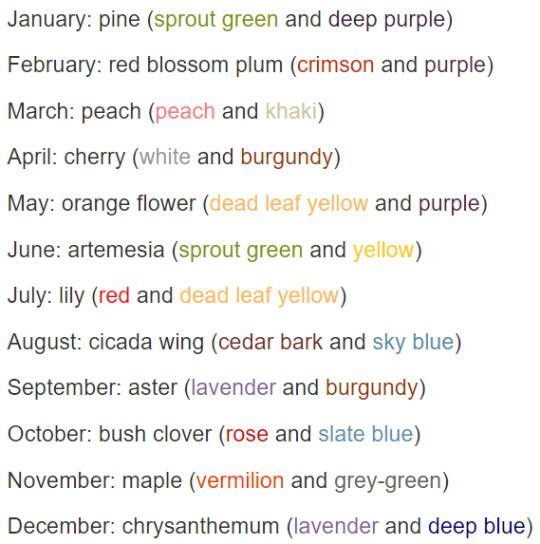
image source
The Japanese have developed their own collection of traditional colors, known as dentoushoku. The four core colors are white, black, red and blue. The names for these were mentioned earliest in historical texts and they have the most meanings attached to them. Only these four could be considered pure primary colors. (source)
According to this chart, the colors are often named after nature and are traditionally grouped into series. They look more muted than modern colors because they’re based on ancient dyeing techniques. These colors are commonly used in daily life: (桜色(Sakura iro), 桃色(momo iro), 薄紅(usubeni), 珊瑚色(sango iro), 小豆色(azuki iro), 玉子色(tamago iro), 橙色(daidai iro), 萌黄(moegi), 空色(sora iro)), while others are only mentioned in literature and used for kimono (source)

This site contains explanations of the names and history for a long list of traditional Japanese colors.
This site also contains a large list of colors with categories, such as Kimono colors, Edo Period colors, Japanese Painting and Ukiyo-e colors
For an immensely detailed and well-illustrated document of Japan’s old colors and their associated names, it’s worth visiting the beautiful website Nippon Colors.
[Edit] The Aizu Domain had its own color rank system for samurai and ashigaru (footsoldiers).
Upper rank (joshi) haori cord colors:

Middle rank (chushi) haori cord colors:
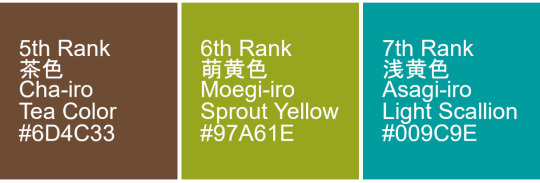
Lower rank (ashigaru) collar colors:
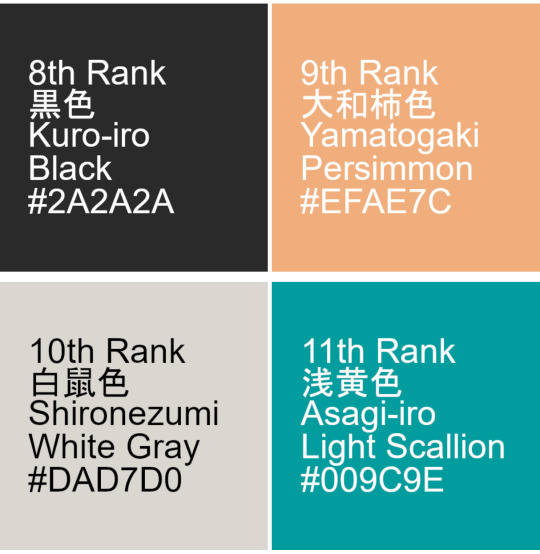
Reference
http://www.studio-mana.com/ippuku/dentousyoku/dentousyoku_shikisou.html
http://wagara.blogspot.com/p/traditional-colors.html
https://en.wikipedia.org/wiki/Traditional_colors_of_Japan
https://www.color-sample.com/popular/jiscolor/ja/
https://www.colordic.org/w
https://www.rakuten.ne.jp/gold/marutomo/value/color/
http://nipponcolors.com/
https://irocore.com/
http://www.fan.hi-ho.ne.jp/gary/aizumibun.htm
200 notes
·
View notes
Video
undefined
tumblr
A Female and an African Ashigaru who respect each other.
Ashi Girl (Ep 2)
Yuinosuke (Yuina Kuroshima) is a Ashigaru (foot soldier) who wishes to serve the Lord and prove her worth by winning a race against a rival Clan.
Akumaru (Max) is the Ashigaru of the rival clan who is her competitor. His master wants him to win by any means necessary, even by cheating.
But Akumaru refuses to cheat as he respects his competitor as being earnest. His honourable attitude earns the respect of Yuinosuke.
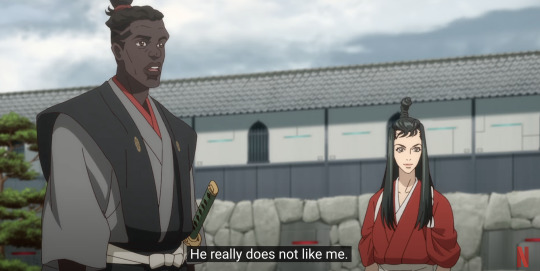
This is what Netflix’s Yasuke should’ve been. It would’ve been interesting to focus on the relationship between Yasuke and Natsumaru.
It doesn’t have to be anything romantic. A relationship can be based on mutual respect like in the film, The Great Wall between William and Lin Mae.

#ashi girl#yuina kuroshima#kuroshima yuina#max#ashigaru#japanese drama#j drama#jdrama#dorama#japan#asian drama#yasuke#the great wall
28 notes
·
View notes
Text

Ashigaru Valkryie Sketch by King Chen
347 notes
·
View notes
Text
I was born in the wrong time. I was meant to be a 16th-century Japanese peasant conscript ashigaru, to swivel my gaze to a samurai lord arrayed for battle in perfectly exquisite lacquered steel armor that cost more than my entire life; to whoop in terrified joy as the flash-pan of my tanegashima caught light and his torso exploded like a firecracker, splattering his divine blood all over his uncomprehending retainers
343 notes
·
View notes
Text
starter | @crimsononiarataki | plot call

"Drop anchor!"
The command shouted out from the captain of the ship carried out through the docks of Ritou and had garnered the attention of some while most others continued doing what they were doing on the piers. While the sailors of the ship busied themselves with mooring her, a person's head of midnight locks peeked out from below deck before they finally made their way up top. With a deep breath, a tanzanite-colored eye shaped into a crescent upon the sight that greeted the newcomer. The gorgeous reds of the maple trees contrasted beautifully with the deep emerald tiles that lined the buildings, and the clear blue sky above them hadn't a cloud in sight.
Kaeya's breath was taken.

The traveler had regaled him with tales of their adventures in Inazuma when they briefly reunited in Sumeru. He gave the blond outlander all his attention as they and their fairy companion animatedly went on about the trials and tribulations they endured; how they ultimately ended the war between the Shogunate and the Resistance, as well as abolished the Sakoku and Vision Hunt Decrees. This led the Cavalry Captain to ponder... he still has time that he could use up. He had finished all his work and cleared a couple backlogs that had been a thorn in the Knights' side, earning him vacation days. Usually he hates idling his time away, but this has been a nice change of pace, going on his own little 'world tour'.
Thus, here he is now. He had to hand it to the traveler, they really know how to tell their tales and spark wanderlust within the Cavalry Captain. It was a little frightening at first, going out on his own so far away from the place he's called home for nearly all his life; and yet, he no longer feels that fear now that he has made his way along the docks and towards customs.
Fishermen, merchants, sailors, and artisans alike hustled and bustled along the port of the entry island of Inazuma. Most people here seemed to be foreigners just like him, having set up shop in Ritou long before the Decree ended. It was a sort of comfort, knowing he wasn’t the only fish out of water. Well, he still is compared to people who’ve hunkered down here for a while, but he’s been reading up on some informative books upon the culture and language in Inazuma during his travels from Sumeru, to Liyue, and finally to the land of the Electro Archon. Hopefully he won’t stick out too much.
The process at customs was—not fun, to say the least. Despite the borders being reopened, the process itself to enter the nation was still grueling and tedious. It took nearly an hour, if only due to the line and how thorough the Kanjou Commission Ashigaru were when it came to checking luggage. The nation may be welcoming foreigners again, but they still seemed to be rather strict with making sure nothing illegal was being imported; rightfully so, of course.
Once he was finally freed from customs and given his welcomes to Inazuma, the Cavalry Captain released a long breath that had been buried deep within ever since the start of his voyage. It renewed his strength and excitement, his eye simply twinkling with near childlike wonder. He began to think on where to start, before hearing his stomach grumble loudly. Ah.
Perhaps lunch is in order.

20 notes
·
View notes
Text
Hallucinating about Kokushibo again (II)
In the first part I wrote on how the stress of expectations affected both Yoriichi and Michikatsu. They were close, and despite Michikatsu(as Kokushibo) remembering he felt pity for his brother more than anything else, he went out of his way to show him kindness in the small ways a child could. Even if he despised Yoriichi’s presumed ‘weakness’ when his younger twin still didn’t speak, I think this was also a product of their adult guardians’ beliefs.
Michikatsu especially became so absorbed in training and preparing to become a leader that he lost the mental and emotional awareness to spare for all else around him, such as his brother’s personality and honest admiration towards him (which he found unsettling) or their mother’s failing health. Yoriichi, on the other hand, still had the stigma of a marginalized member of the family and only when he exhibited an innate speed and reflexes was the spotlight turned on him—which, as we saw, he didn’t really care about as much as Michikatsu did (as an example, when Yoriichi mentions he’d rather play board games or fly a kite with his brother than talking about the sword).
Thinking of it this way: you’ve been working hard your whole (short) life to reach a goal, and someone, arguably the being closest to you, suddenly surpasses you with little effort or intent. The instinct is to turn defensive, to harbor intense inadequacy and that was exacerbated by the perceived shame and dishonor in failure at the time. I see it as a cognitive dissonance and emotional incongruity that broke something (a balance) inside Michikatsu which never healed: he loved and admired his younger twin brother, he hated his own perceived lack of skill to meet expectations as well as Yoriichi, and so struggled with this love and the sickly jealousy that would follow him for the rest of his life.
When Yoriichi left after their mother Akeno passed, Michikatsu felt relief since he could fulfill the role expected of him. He found out Yoriichi knew of their mother’s illness and that their father wanted to make him heir instead—and left earlier than planned. Why? It was clearly not something he wished for, nor was retreating in a temple to become a priest. Yoriichi left to not be in the way and to find his own life ‘under the infinite expanse of the beautiful sky.’ This must’ve been another source of confusion for his brother.
Michikatsu in the meantime mentions 10 years going by, and while he was 'blessed with a family' those were harmonious yet rather 'boring' days. His father dies soon after he marries, his mother is long gone, and Yoriichi has disappeared. As far as Michikatsu knows, he's alone but for his spouse and children. As a samurai he sees war and battle during this time and most surely is a retainer with sworn loyalty to a daimyo (feudal lord). He likely earns a rank in the military, and kills people, not demons, following the way of the warrior. Going over military office ranks, at the moment I like to headcanon that he may have been a 'kogashira':
Taisho - ranked officials, generals of the daimyo's military, taking control of units of troops called kumi. Depending on their troops, they were either referred to as Samurai-taisho or Ashigaru-taisho.
Kumigashira - officers who controlled a kumi of troops, and were called samurai-kumigashira or ashigaru-kumigashira depending on the make up of their kumi.
Kogashira - lower ranking officers that serve under and assist the ashigaru-kumigashira. Depending on its size, a kumi may have several kogashira. Each has direct command over a smaller squad of individual ashigaru within the unit.
This was the life he’d wanted, the life he’d prepared for. I think he was the type of character who didn’t shirk away from his duties and did his best by people who depended on him. I think he cared for his family for as much as he was capable of doing. But all of this? Kokushibo says his life was tranquil and that the flow of time was extremely slow. Something was missing. Now comes the headcanon time: could it be that he was more alike Yoriichi than he thought? He only fought to win to lead a clan and be a samurai as his forebears because that was imposed on him, but as we see, it was not enough.
It’s only when he and Yoriichi meet again that Kokushibo recalls ‘his serenity being destroyed’ and that once again ‘his stomach burned with jealousy and hate’.
Thinking about it: no matter how many times Kokushibo says he despises, hates, and wanted to kill Yoriichi, he remembers his brother as ‘someone intense and vivid who burns everything… like the Sun.’ He never turned his animosity into actions against his brother, never raised a weapon on Yoriichi until he had to, and that was because Yoriichi attacked him out of duty.
But for now Yoriichi was alive, the only person Michikatsu knew who could surpass him in everything still walked this earth and crossed his path again, and time was no longer stagnant for him. He felt alive and a strong desire to reach the same heights. His peace might have been destroyed that night, but how strong must a feeling be to make everything you’ve achieved and fought for pale in comparison? I think it was envy but also love that drove him to drop it all and join Yoriichi’s side. Abandoning one’s family, their lord and role in society was not a negligible decision. It was not something you could just do without repercussions, yet he did it anyway. And maybe deep down if he could have, Michikatsu would have joined Yoriichi in running away all those years ago.
More rambling in part III
10 notes
·
View notes


